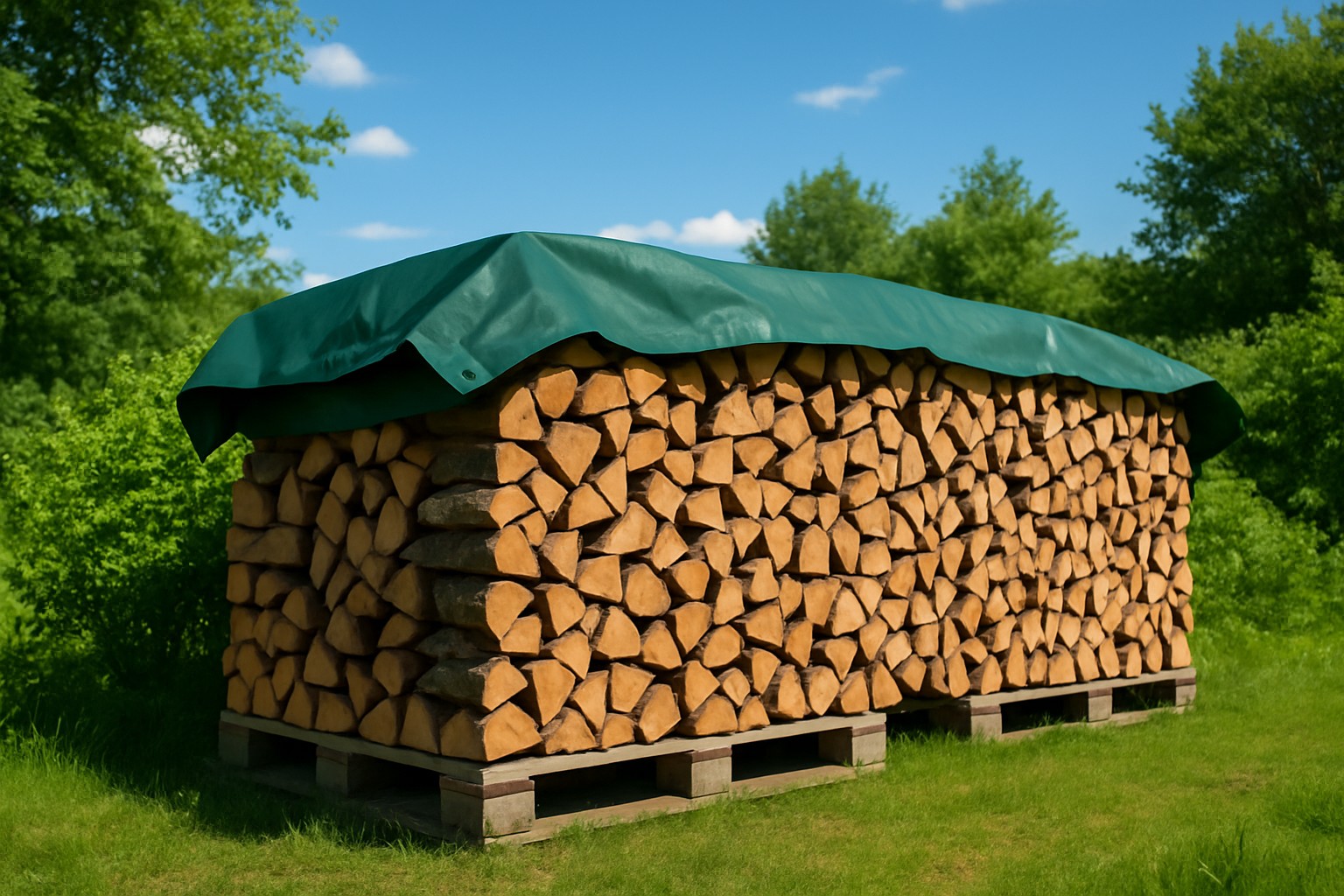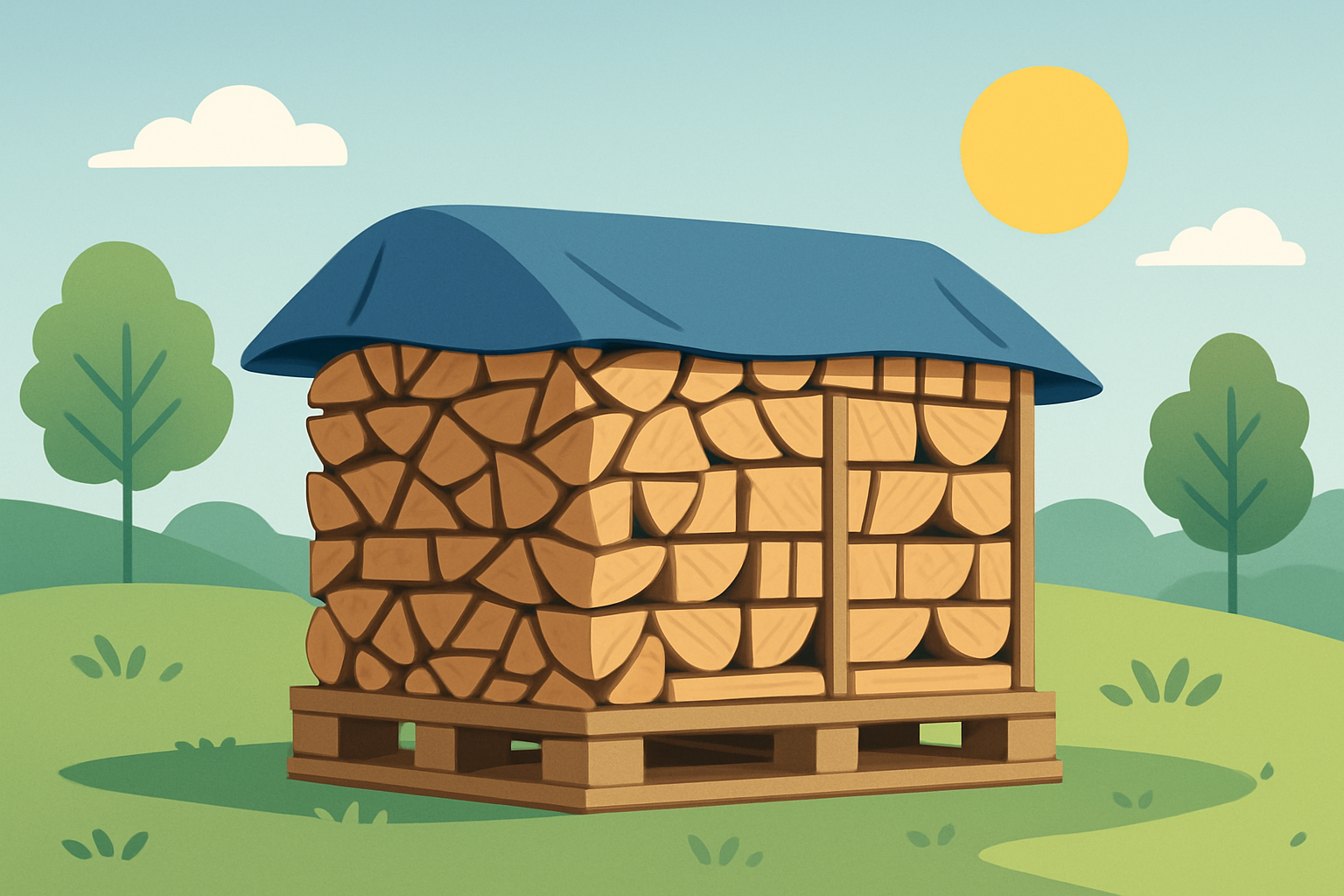
How to Store Wood to Keep It Dry and Lasting?


Storing wood is vital if you want to keep it in tip-top shape whether you’re gearing up for a cozy fire, a building project or some fine woodworking. When wood isn’t stored properly it soaks up moisture, sprouts mold and invites unwelcome creepy crawlies that can mess with its strength and usefulness. This guide walks you through straightforward steps to keep your wood dry, airy and safe so it can serve you for years to come.
The Importance of Storing Wood Properly
You might think storing wood is a straightforward task, but trust me, it’s a bit more of an art than it looks. Getting it right can save you from a world of headaches down the line. Whether you’re prepping for a cozy winter fire or a weekend DIY project, how you stash your wood makes all the difference. Let’s dive into why proper wood storage deserves your attention and a little extra care.
All the stuff that sneaks up and really cuts down its lifespan and usefulness.
How to Pick the Perfect Spot for Storing Wood
Picking the right place to store wood is vital if you want to keep it dry and in good shape. The ideal spot stays dry, lets air flow freely and offers some shade to prevent cracking from direct sunlight. It should also be tucked away from rain and damp ground.
- Raise the wood off the ground to keep it from soaking up soil moisture. Nobody wants soggy logs.
- Pick spots that get plenty of sunlight because it helps the wood dry out quicker and saves you headaches later.
- Make sure air can circulate freely around the stack since good ventilation is the secret sauce.
- Keep your wood away from moisture sources like garden beds or drainage areas because damp wood is a pain.
- Choose locations that are easy to reach and comfortable for both stacking and grabbing pieces when you need them.
How to Get Your Wood Ready for Storage Without a Hitch
You should prep wood properly before stacking it for storage. Typically this involves seasoning or drying the wood to reduce its moisture content, chopping it into manageable lengths and giving it a quick clean to remove dirt and bark whenever possible.
- Let the wood dry out by leaving it exposed to fresh air for a few months. Patience really pays off in lowering its moisture.
- Split bigger logs into smaller chunks to increase the surface area. This trick almost always speeds up drying.
- Make sure to scrape off any dirt, moss or loose bark because it’s a simple way to keep moisture and bugs from moving in.
- Give the logs a careful once-over for any creepy crawlies or signs of rot before tucking them away for the season.
- After cutting fresh wood, let it sit out in the air for a few days before stacking. It’s like giving it a little breather to kickstart drying.
Effective Ways to Store Wood and Keep It Dry (Because Nobody Likes a Soggy Log)
There are a handful of trusty ways to store wood that really help keep it dry and in tip-top shape. Open stacking lets the air circulate freely, which is a lifesaver for preventing moisture buildup. Covered storage acts like a sturdy umbrella, shielding your wood from the whims of weather. Indoor storage offers a cozy, protected spot away from those pesky outdoor elements. And don’t forget storage racks—they’re great for keeping things neat and tidy while lifting the wood off the ground where it might otherwise get damp or dirty.
Start by propping up your wood stacks on pallets or sturdy supports to keep them safely off the damp ground because soggy wood is no one's friend.
Arrange the wood in a crisscross or log cabin style, which creates small air pockets that promote airflow and prevent moisture from hiding inside the pile.
Keep your stacks neat and uniform in length so they stand firm and dry evenly, avoiding any wobbly towers.
Cover the top of the stack with waterproof tarps or specially made wood covers, but leave the sides open to allow fresh air in and prevent stuffiness.
Avoid wrapping wood stacks tightly in plastic because that traps moisture like a sauna and can cause rot faster than you would like.
Shuffle your wood bundles now and then; rotating or restacking helps bring the inner logs out into the fresh air and prevents mold.

A properly stacked and covered wood pile, elevated on pallets to ensure ventilation and protection from ground moisture.
Materials and Tools That Can Really Make Wood Storage a Breeze
Choosing the right materials and tools can really make a world of difference when it comes to storing wood. Pallets or wooden racks keep your wood off the ground, which is key to stopping moisture from sneaking in and causing trouble. Strong tarps or purpose-built wood covers do a great job shielding your stacks from rain while still letting the air circulate because wood needs to breathe, just like the rest of us. Portable sheds are the go-to for wood that demands a bit of extra TLC.
| Material/Tool | Purpose | Pros | Cons | Recommended Use Scenario |
|---|---|---|---|---|
| Pallets | Keep wood off the ground | Budget-friendly and lets air circulate nicely | Needs a bit of upkeep | Stacking wood outdoors |
| Tarps | Shield wood from rain | Easy to throw over, won’t break the bank | Can trap moisture if wrapped up too tight | Quick cover-ups or seasonal protection |
| Wood Storage Racks | Organize wood and keep it raised | Improves airflow and keeps stacks steady | Can be a bit of an investment | Storing firewood neatly in yards or set areas |
| Moisture Meter | Check how much moisture is in the wood | Gives spot-on readings, helps dodge mold issues | Runs on batteries, costs upfront | Making sure firewood is good to go |
| Wood Storage Sheds | Fully enclose wood for the best protection | Shields from weather and pesky critters | Pricier option and takes some space | Long-term storage for valuable lumber or firewood |
Common Mistakes People Often Make When Storing Wood (And How to Avoid Them)
Steering clear of common mistakes can truly make all the difference in keeping your wood in tip-top shape. The usual suspects include placing wood straight on damp ground, wrapping it in plastic that turns it into a moisture trap, piling pieces too close so air can’t do its job, and stashing wood near spots where pests love to hang out.
- Leaving wood right on the ground, where it eagerly soaks up moisture and practically invites rot to set in.
- Wrapping wood in plastic sheets that trap moisture inside, often creating the perfect little mold factory.
- Stacking wood too tightly without any gaps, which suffocates airflow and leaves the wood feeling clammy and damp.
- Stashing wood too close to buildings or thick vegetation, rolling out the red carpet for pests to move in.
- Forgetting to check on the wood regularly for any sneaky signs of moisture or bug damage. A little vigilance goes a long way.
How to Keep Wood in Good Condition While Stored
To keep stored wood in good shape it’s wise to check regularly for any signs of moisture or mold and tweak the covers accordingly. Make sure to rotate those wood piles every now and then so air can work its magic on all sides, preventing any stubborn spots from drying unevenly. If pests decide to join the party, bring out the deterrents to send them packing. And when the wood gets damp—because it inevitably will—try restacking it in a sunny spot or even splitting the pieces up.
"Keeping up with regular care for your wood storage not only helps it stand the test of time, but it also protects your investment and ensures you’ve got your wood ready to go whenever the moment calls for it."
Key Differences to Keep in Mind Between Firewood and Construction Wood (Because Not All Wood Plays by the Same Rules)
When it comes to how to store wood, firewood and construction wood don’t play by the same rules. Firewood dries out quicker so it’s best to stack it outside where it can breathe, ideally under a cover that keeps rain at bay but still lets air circulate. Construction wood is more high-maintenance because it needs to be shielded carefully from warping and moisture.





